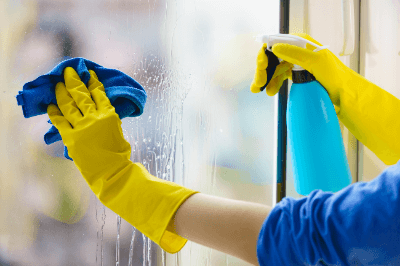What Is Glass Cleaner?

Glass cleaner is a detergent specifically formulated to remove grease and water stains from windows, glass, and mirrors. It comes in various types, each suited for different applications such as household, automotive, and commercial settings.
Most glass cleaners are alkaline and contain surfactants, effectively dissolving and removing oil stains.
Diverse in form, glass cleaners can be applied via spray and wiped off with a sponge or rag, or come as pre-soaked sheets, offered by numerous manufacturers.
Uses of Glass Cleaners
Glass cleaners are primarily used for cleaning windows and automotive glass. They also serve as a primer for car window glass coatings. Some automotive glass cleaners include abrasive particles.
For household use, they effectively remove stains from various surfaces including living rooms, bathrooms, cupboards, plastics, glass tables, and showcases. However, they are not recommended for LCD and plasma display screens due to their alkaline nature and are also unsuitable for wood and walls where water can seep through.
Principle of Glass Cleaners
Composed of alkaline or slightly alkaline surfactants, glass cleaners work on the same principle as regular detergents, breaking down oil and further dissolving it. Some include alcohol as an ingredient. Alkaline electrolyzed ionized water variants are also available, but may struggle with stubborn stains.
To use, spray the cleaner and then wipe it off with a lightly wetted, wrung-out cloth, or a dry cloth. For cars and windows, apply water for rinsing.
There are three main types of glass cleaners: those that flatten the oil film, those that remove it like a detergent, and those with abrasives. They are available in liquid spray, foam spray, aerosol, and sheet forms. Alkaline products can be rough on hands, so it’s advisable to wash hands after use.
Ingredients of Glass Cleaners
Glass cleaners typically contain the following ingredients:
- Water
- Alcohol
- Glycol ether
- Surfactant
- pH adjuster
- Fragrances and colorants
Alcohol and glycol ether dissolves organic stains effectively. However, water is added to raise the flash point to prevent fire hazards due to their low flash points. Surfactants ensure the liquid spreads evenly on the glass, and pH adjusters help remove alkaline water stains. Fragrances and colorants improve the product’s scent and appearance and help distinguish it as a glass cleaner.
How to Use Glass Cleaners
When using glass cleaners, it’s important to apply them properly. Spray from an appropriate distance to ensure even coverage without forming pools or failing to adhere. When cleaning areas above eye level or on glass attached to electrical appliances, use a soaked cloth. For frosted glass, spray evenly, scrub with a brush, and then wipe with water.